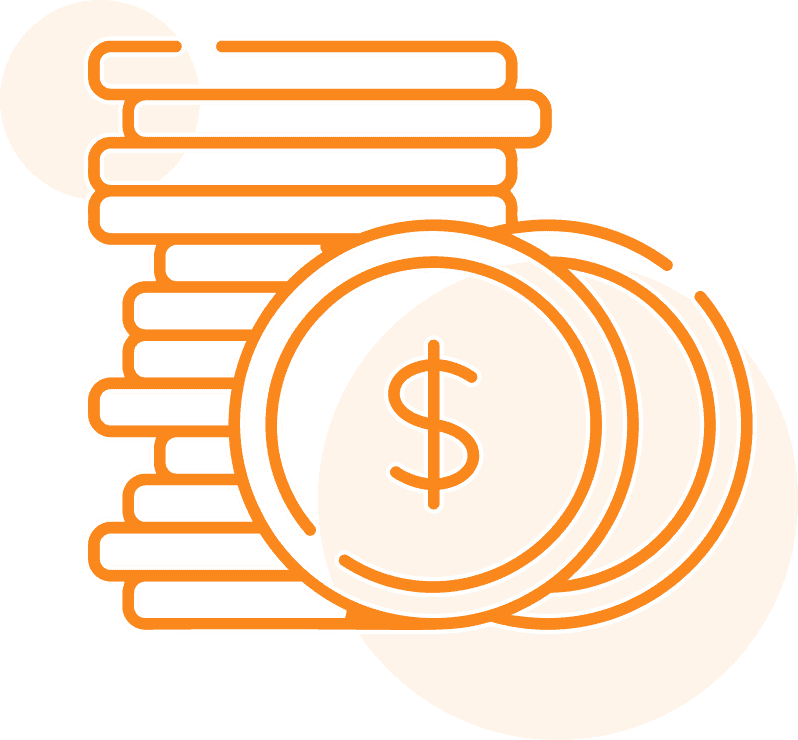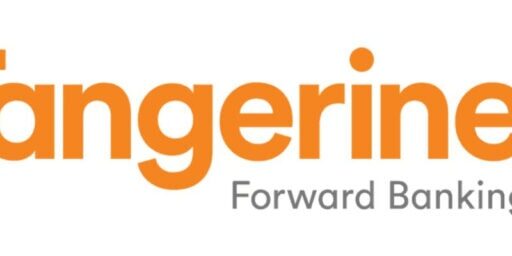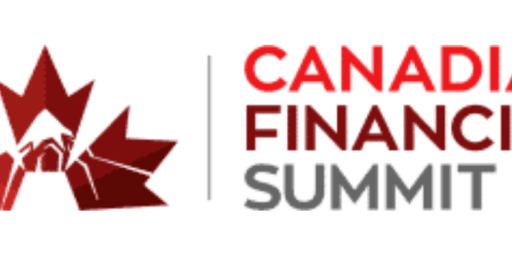Top 6 Indexing Options for Your Portfolio in 2025
If you’ve been circling the idea of index investing, and fully committing to a passively-managed portfolio – but find yourself in paralysis-analysis mode – then unfortunately you have plenty of company. A lot of folks get stuck in the pre-game – unsure where to begin, thinking they don’t have enough money to get started, or feeling like they need a finance degree in order to select a fund.
Here’s the good news: you don’t need to be an expert, and you don’t need to be rich.
You just need a plan that’s simple, low-cost, and has real data backing it up.
That’s where my index investing portfolio options come in.
In this guide, we’ll break down exactly what index investing is, why it’s such a no-brainer for many Canadians, and how to get started without all the stress. Whether you’ve got $500 or $50,000 to invest, this strategy is built to maximize chances of success for people who aren’t interested in reading quarterly corporate reports and just want an evidenced-back way to grow their money.
Note that many of our Canadian dividend stocks fans also choose to passively invest a part of their portfolio with index investing in order to get broader diversification built in.

Best 2025 Broker Promo
Up To $2,000 Cash Back + Unlimited Free Trades
Open an account with Qtrade and get the best broker promo in Canada: 5% cash back when you fund a new account!
The offer is time limited - get it by clicking below.
Must deposit/transfer at least $1,000 in assets within 60 days. Applies to new clients who open a new Qtrade account by November 26, 2025. Qtrade promo 2025: CLICK FOR MORE DETAILS.
What is Index Investing?
Index investing is hands-down one of the easiest and most effective ways to grow your wealth over time. Instead of trying to pick winning stocks or buying-and-selling as the market goes up and down, you simply buy a fund that tracks a broad swath of the market. You let the entire group of companies (often called “the market”) do the heavy lifting for you.
Index investing is synonymous with passive investing. The goal is simple: get the market’s average returns, keep fees low, and let compounding do its thing. The average return of the world’s stock market has been more than enough to build wealth over the last hundred years.
Active investing, on the other hand, involves picking individual stocks, or paying a fund manager to do that on your behalf. The idea is to “beat the market” (get higher returns than average) by making trades or tactical moves.
Now here’s the undeniable truth: the vast majority of active investors – whether they’re pros or DIY stock pickers – underperform the market over the long term. And they usually pay a lot more in fees to do it.
Passive index investing isn’t flashy. It doesn’t promise quick wins. But decade after decade, the boring “buy the whole market and chill” strategy has quietly outperformed nearly everyone who tries to outsmart it.
What’s an Index Investing Fund?
An index fund refers to either a mutual fund or exchange-traded fund (ETF) that mirrors the performance of a specific market index like the S&P 500, S&P/TSX 60, or MSCI World Index. When you invest in an index fund, you’re instantly buying tiny pieces of hundreds (or even thousands) of companies all at once.
You don’t need a stock broker, a finance degree, or a lucky rabbit’s foot. You just need to choose a fund with broad diversification and rock-bottom fees – and stay the course. Most Canadian index investors generally pick one of the following four lanes.
Index mutual funds – These are easy to set up through your bank or financial institution, and offer simple, automated investing. But watch out: many still charge higher fees than ETFs, so they’re not always the best value. You can see some of the options here in my Best Mutual Funds in Canada article.
DIY ETF Investing – With a Canadian discount brokerage account, you can build your own ETF portfolio using low-cost funds like those from Vanguard, iShares, or BMO. This takes a bit more effort, but offers ultimate control and minimal fees (as low as 0.03% to 0.20% depending on your choices). See our list of the 49 Best ETFs in Canada for more information.
All-in-one ETFs – These “portfolio ETFs” have been a real game-changer for most Canadians. Funds like VGRO, VBAL, or XEQT give you global diversification, a balanced mix of stocks and bonds, and automatic rebalancing — all in one package. You can open a Qtrade account (see our Qtrade Review), pick the one that matches your risk level, and be done in five minutes. Fees are typically around 0.20% or less. See our guide to Canadian all-in-one ETFs for a complete look at your options.
Robo Advisors – The best robo advisors in Canada basically take the all-on-one ETF model, and then add in a small advisory component. They also make it even easier to invest a chunk of your money every month since you don’t have to buy units of an ETF. Just send your cash to Justwealth or Wealthsimple and they’ll take care of the rest (for a small fee of course).
Index Investing Pros and Cons
Now that you know a bit about what an index fund is, let’s have a look at some of the advantages and disadvantages of index investing.
Advantages of Index Investing:
- Index investing is very convenient – usually taking less than an hour per year.
- Index funds are extremely cost-efficient.
- Provides investors with great diversification.
- It’s easy to get started and maintain an index fund portfolio.
- You don’t need to spend a lot of time researching stocks and bonds, as the choices are already made for you.
- A wide range of index funds are available and it’s a competitive market.
Disadvantages of Index Investing:
- Not flexible as investors don’t get to choose individual stocks represented in the fund.
- Doesn’t provide you with a full financial advisor, and consequently can lead to folks taking on more risk than they should be.
- Generally an index fund won’t beat the market.
There are quite a few reasons why index funds are a great investment choice, including the fact that they are low cost and offer great diversification, giving you great returns over time. Even the mighty Warren Buffet believes in index investing, so much so that he wagered (and easily won) $1 million dollars on a bet that an S&P 500 ETF would outperform an actively managed hedge fund over the span of 10 years.
How to Start Index Investing
Let’s move on to the next step, setting up your account and choosing your funds!
The first thing to do is choose your investment platform and set up your account if you don’t already have one. Once you’ve finished reading this article, you can head over to our comparison of best Canadian online brokers, as well as learn more about one of our top rated brokerages in our Qtrade review.
Next, it’s time to choose the platform and step-by-step process that you will use in order to get started with index investing. Reminder: All of these options below will leave you invested in the same underlying assets. Your money will be spread out across the largest companies in the world, and a variety of bonds from large stable governments and blue chip companies.
1. Do-it-Yourself (DIY) with ETFs
If you’re brand new to investing and not sure about ETFs, then this may not be the best option. However, if you are interested in DIY investing, this will likely be the lowest cost option and keeping MER low will make a big difference over the long term.
DIY index investing involves opening up a discount brokerage and buying and selling index ETFs (which trade like stocks). To keep costs to an absolute minimum, the ideal scenario is to use a discount brokerage that waives the trading free on ETFs.
Once you choose a brokerage, the next step is to choose the ETFs that represent: Canada; US; International; and, Bonds. If you want to keep it super simple, you can create an indexed global portfolio with only three ETFs:
- Canada: XIC (MER: 0.07%);
- U.S and International: XAW (MER: 0.22%);
- Bonds: VAB (MER: 0.13%);
As you can see, the portfolio MER would be pretty low averaging between about 0.15%, depending on your weightings and the amount of XAW you are holding in your RRSP (withholding taxes).
Asset allocation is another element that you’ll need to think about – in other words, the percentage of bonds and equities in your portfolio. Essentially, you’ll want to increase your bond allocation as you get closer to retirement.
Bonds will reduce the big swings in portfolio value from year to year (volatility), but will slightly reduce your portfolio return over the long term. You will also hear bonds referred to as “fixed income” and you can read more about them in my article on the Best Low Risk Investments in Canada.
After you’ve set-up your portfolio, you’ll need to periodically adjust your holdings so that it maintains your asset allocation – this is called rebalancing your portfolio. So if you want to have 25% in each of Canada/US/International/Bonds, at the end of the year, the ratio will likely be a bit off. For me, I like to rebalance when I add new money to the account.
2) DIY with All-in-One Portfolio ETFs
To make it even more simple with ETFs, Vanguard/iShares/BMO have introduced all-in-one ETFs that will eliminate the need to rebalance your portfolio. In a single ETF with a relatively low MER, you can have a globally diversified indexed portfolio. You simply need to pick the ETF that suits risk tolerance (bond %). Here’s some more details on Canadian all-in-one ETFs.
3) Robo-Advisors
The option of using a Robo-advisor is gaining traction for investors that want to be totally hands off. Essentially, the Robo-advisor will determine your risk tolerance via questionnaire and set your index bond/equity allocation accordingly.
While a DIY portfolio may cost you between 0.14-0.3% per year in fees, expect a Robo-advisor to add another 0.4% onto that. A big benefit of the Robo-advisor is that it will automatically rebalance for you on a regular basis and some will even give you financial planning advice.
Here is a look at the best robo advisors in Canada.
4) Big Bank Index Mutual Funds
If you are dead set on staying with your bank, then the best way to index is through their in-house index funds. They all have them despite what your mutual fund representative may recommend. We wrote about them at length when we looked at the Best Mutual Funds in Canada.
What’s the catch? You may end up paying a bit more (should be close to 1%), and you may need to have meetings with your advisor when it comes time to rebalance.
5) Tangerine
For a 1.06% fee, Tangerine offers indexed balanced funds that are a really simple solution for investors. Essentially, you buy one of their balanced funds that are differentiated by the ratio of equities/bonds. Here is a summary:
- Tangerine Balanced Portfolio: 60% equities (20% Canada; 20% US; 20% International) and 40% Canadian bonds.
- Tangerine Balanced Growth Portfolio: 75% equities (25% Canada; 25% US; 25% Internationaal) and 25% Canadian bonds.
- Tangerine Equity Growth Portfolio: 100% equities (33.3% Canada; 33.3 US; 33.3 International)
As with any balanced fund, there is no need to manually rebalance as the fund will take care of that for you. I like the simplicity of this solution, although it costs more than a Robo-advisor.
6. Your Defined Contribution Pension
Many of you work for an employer that offers RRSP matching with a selection of available funds. The selection can be overwhelming, but the secret is to choose funds with the word “index” in the title.
You can choose similar “index” funds from US, International and Bonds to keep your fees low and performance higher than other more expensive actively managed funds.
Index Mutual Funds vs. Index ETFs
One of the last things to consider before starting on your index investing journey is whether to choose an index mutual fund or an index ETF. They are similar in many ways, namely that they track particular indices, are low-cost and easy to manage.
Given how massive the MER gap is between index mutual funds and index ETFs these days, I don’t think there is any real reason to choose to pay 10x more for the mutual fund. You can buy and sell index ETFs through our top online brokers and the underlying investments are exactly the same.
Index Investing in Canada – FAQ
Final Thoughts
Index investing has come a long way since it was first introduced by John Bogle in 1976. Its rise in popularity over the last couple of decades has made it a more accessible investment option for people of all ages and stages of their investment journey.
For its incredibly low cost, diversification opportunities, ease of use, and earning potential, I highly recommend index investing as part of your portfolio.
DIY with index ETFs is likely the best option for ultra-low-cost investing, but also requires the investor to open a discount brokerage account and buy/sell ETF positions when rebalancing (except when going with an all-in-one ETF).
If you are the type of investor who wants convenience over all else, then I would recommend an all-in-one ETF, or a Robo-advisor such as Justwealth for example. Those solutions work just fine with an automatic payment into the fund/account. It’s really by far the easiest way to take a piece of your paycheque and instantly convert it into a growing index-invested nest egg!
I've Completed My Million Dollar Journey. Let Me Guide You Through Yours!
Sign up below to get a copy of our free eBook: Can I Retire Yet?











GREAT INFO !
Great information thank you. I have decided on a robo legacy account for my kids and Gkids within the next few months. Has anyone done a return comparison between the ETFs of Wealthsimple and Nest Wealth over the last couple of years? Any other information on these would be welcome besides just their costs.
Cheers
Doc
Hi MIchael, yes we have a number of Vanguard options in Canada. For US exposure, VTI (in USD) is popular and super cheap.
Curious – most of the American FIRE sites mention Vanguard S&P 500 … do you have the Vanguard option in Canada? … and what would be the cost numbers if so? Michael CPO
Great read. It’s amazing the advancements we are making. I remember when discount brokers like Questrade were new kids on the block and I didn’t think it could get any better with those commission prices. Now we have ETFs saving people from over priced MERs and Robo Advisors making the decisions for you with a simple questionare. What a great time to be alive!
Wow good post aNd thanks for the heads up of what etfs you recommend. Personally I like doing it myself but see the potential of the robo advisors.
Wow those MERs are quite high in your DCPP! Did anyone ever ask the company to change the fund offerings?
I did ask my company. No way! They don’t even understand why I’m asking. They don’t have an incentive either I believe. Most employees don’t understand any of this either and so the only way to free my money would be to quit so I can just move the money to my broker.
My company plan has some of those same mutual funds but the MERs are substantially higher. The Canadian index fund in my plan has an MER of 1.3% and the rest are even worse. Manulife is taking unfair advantage of me.
Could you please explain a little bit about how to erebalancing td e series account? Thank you! I really appreciate if you can provide an explam with calculations
For specific calculations for your particular situation, Moneysense created a nifty spreadsheet that will help you with rebalancing your portfolio.
http://www.moneysense.ca/invest/portfolio-rebalancing-tool/